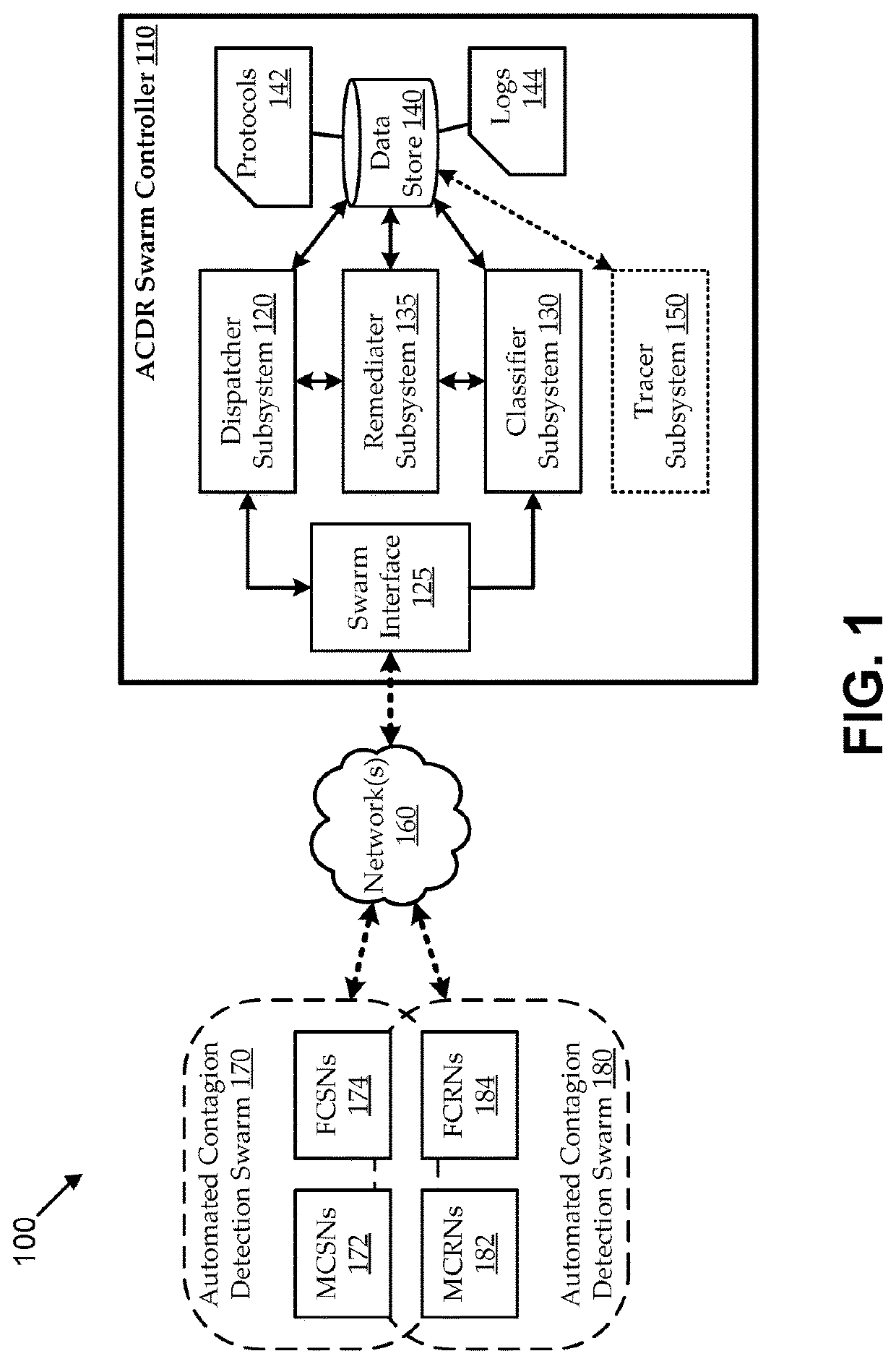Automated detection and remediation of contagion events
a contagion and automatic detection technology, applied in the field of automatic control systems, can solve the problems of not being able to know in many cases where and when to apply social distancing from other people, affecting economic and social impacts, and not being able to keep track of where viruses and other contagions are located and other problems, to achieve the effect of reducing the number of people affected, preventing the spread of viruses and other contagions, and preventing the spread of other peopl
- Summary
- Abstract
- Description
- Claims
- Application Information
AI Technical Summary
Benefits of technology
Problems solved by technology
Method used
Image
Examples
Embodiment Construction
[0017]Embodiments of the disclosed technology will become clearer when reviewed in connection with the description of the figures herein below. In the following description, numerous specific details are set forth to provide a thorough understanding of the present invention. However, one having ordinary skill in the art should recognize that the invention may be practiced without these specific details. In some instances, circuits, structures, and techniques have not been shown in detail to avoid obscuring the present invention.
[0018]Conventional approaches to limiting the spread of contagions (e.g., pathogens, viruses, etc.) tend to focus on testing humans to determine if they are infected, and on corresponding protocols for behavioral requirements (e.g., social distancing, wearing of personal protective equipment (PPE), etc.), tracking, and remediation. Ultimately, prevention often relies on the eventual discovery or invention, and sufficient distribution, of an effective vaccine....
PUM
 Login to View More
Login to View More Abstract
Description
Claims
Application Information
 Login to View More
Login to View More - R&D Engineer
- R&D Manager
- IP Professional
- Industry Leading Data Capabilities
- Powerful AI technology
- Patent DNA Extraction
Browse by: Latest US Patents, China's latest patents, Technical Efficacy Thesaurus, Application Domain, Technology Topic, Popular Technical Reports.
© 2024 PatSnap. All rights reserved.Legal|Privacy policy|Modern Slavery Act Transparency Statement|Sitemap|About US| Contact US: help@patsnap.com










